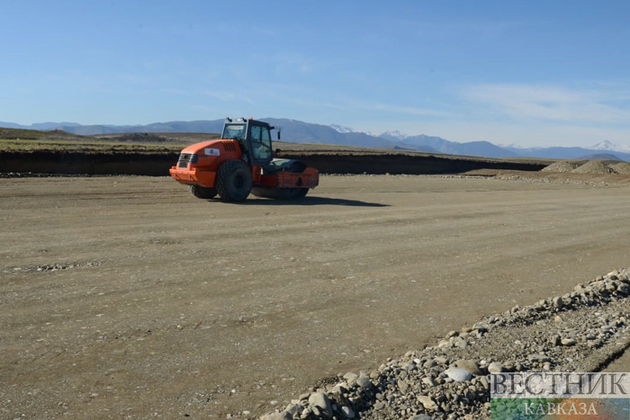Eastern Partnership (EaP) Foreign Ministers recently met in Brussels to advance the partnership with a strong focus on governance and investment, and to give an impetus to the implementation of the new and ambitious EU-EaP agenda. While this meeting will set the ground for the upcoming Eastern Partnership Summit in December, recent deadly skirmishes between Armenia and Azerbaijan seem to put peace and stability in the EU’s eastern borders once again in jeopardy.
EU Today reports that a year on from the end of the so-called 44-day “Second Karabakh War” between Armenia and Azerbaijan, tensions continue to rise along the border, with the latest clash in Kaljabar and Lachin regions having resulted in reportedly 15 deaths from the Armenian side and 7 deaths from the Azerbaijani side in addition to tens of wounded. These were the deadliest clashes since a trilateral statement was signed among Armenia, Azerbaijan, and Russia in November 2020.
Until the above-mentioned trilateral statement, Azerbaijan de-occupied half of its internationally recognised territory militarily. The statement further obliged Armenia to return the remaining occupied territories, such as Aghdam, Kalbajar and Lachin districts to Azerbaijan by December 2020. After regaining access to and restoring control over the border, Azerbaijan put in place border protection measures in accordance with the map agreed among Azerbaijan, Armenia, and Russia, and called on Armenia to start working on delimitation and demarcation procedures.
While Azerbaijan has engaged in demining and reconstruction, has initiated new highways and airports, and has contemplated smart cities projects in the de-occupied territories, Armenia’s lack of commitment to fulfil its obligations under the deal risks destabilising the region once again. This became evident when Armenia engaged in military operations to capture strategic positions, refused to return several villages and Armenian Foreign Minister Ara Ayvazyan paid an unauthorised visit to parts of Nagorno-Karabakh region, where a Russian peacekeeping mission is currently deployed to oversee the truce.
But this month, Yerevan continued to enact fresh provocations with yet another ministerial visit to Azerbaijani territories and an attempt of the Armenian forces to block the road between Azerbaijani army positions in Lachin. This followed a bombing incident, resulting in the injury of three Azerbaijani soldiers in Shusha.
These moves demonstrate a weak commitment to the ceasefire provisions and a lack of goodwill to address the unresolved issues in the trilateral statement while sowing mistrust among its parties. Importantly, they overshadow the peacekeeping efforts of Russia in the region.
Moreover, Armenia is clearly seeking to internationalise the problem by repeatedly appealing for foreign help with unfounded claims about aggressive military actions on the Armenian territories, which it hopes could trigger, inter alia, a Russian intervention under the Collective Security Treaty Organisation.
Even after accusing the Azerbaijani forces of border breaches, the Armenian leadership sacked Defence Minister Arshak Karapetyan on 15 November, which implies internal divisions, political instability, and chaos in Yerevan. Alarmingly, the entire region seems to be succumbing to chaos as tensions came to a high point when Iran organised military exercises near the Azerbaijani border and Armenia recalled its envoy from Israel in the last few weeks.
Considering these concerning developments, restoring peace and security in the region in a timely manner is now more paramount than ever. But lasting peace and prosperity cannot be achieved without a comprehensive peace treaty, a clear delineation of borders, and a fertile ground for the connectivity projects foreseen in the ceasefire agreement.
The rail and road connections between mainland Azerbaijan and Nakhchivan via southern Armenian territories, could potentially unblock larger transportation projects in the region. This will not only provide a link between mainland Azerbaijan, Nakhchivan Autonomous Republic, Turkey, and the EU but could also lead to new land connection and transportation lines between Asia and Europe.
This is a unique occasion to revive the EU’s Eastern neighbourhood economically for the first time since the Soviet era while providing an opportunity for the EU to engage in post-conflict reconstruction and rehabilitation in the region, including support for demining, border delimitation and demarcation and the unblocking of all trade, energy, and transport links. The upcoming Eastern Partnership summit shall seize this opportunity without delay.






